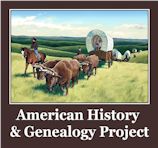Sketches & Portraits ~ Henderson to Walker
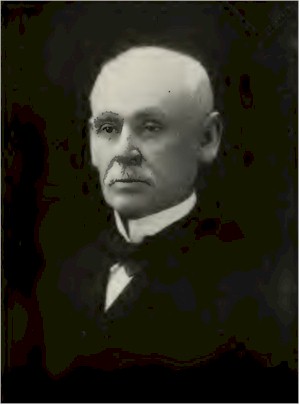
Henderson, Henry Parry
Henry Parry Henderson was born September 22, 1843, in Otisco,
Onondaga County, New York, his father being Parry Henderson and
his mother Huldah Christian. While he was quite young his
parents moved to Michigan and he was educated in the public
schools of Mason, the high school of Lansing, and the
Agricultural College at Lansing. He came to Utah in August,
1886, and was an accomplished lawyer at that time, though his
only attendance at law school was con-fined to a short period at
Ann Arbor. He acquired his legal education by reading law in the
offices of experienced lawyers, and always argued that it was
the best way for a young man to obtain legal learning.
Mr. Henderson held the office of county clerk of Ingham County,
Michigan, was clerk of the supreme court of Michigan two years,
prosecuting attorney of Ingham County two years, and served as a
member of the Michigan legislature in 1879. He was elected mayor
of Mason, county seat of Ingham County, and during Cleveland's
administration he was appointed a member of the Territorial
Supreme Court of Utah. He married about this time, and two
children born to them died when very young. Mrs. Henderson has
been a leading personality in Salt Lake society ever since she
came here and is still prominent. She is a lady of pleasing
personality, and very popular.
In addition to the great law practice which Judge Henderson
established in Utah after his advent here, he acquired holdings
in many of the big mining properties of the State. He possessed
social qualities highly developed and was a member of the Alta
Club, the University Club and the Salt Lake Commercial Club.
Judge Henderson was a Democrat all his life. He served as a
member of the city board of education from January 1, 1899, to
January 1, 1901. January 1, 1903, he was again returned and
served continuously until his death, being elevated to the
presidency of the board on January 1, 1908, his term to expire
January 1, 1911.
At death he was the head of the legal firm of Henderson, Pierce,
Critchlow and Barrette, composed of H. P. Henderson, Frank
Pierce, E. B. Critchlow and W. J. Barrette. It was one of the
strongest legal firms in the State, and enjoyed an extensive
clientele in adjoining States.
Judge Henderson died June 3, 1909, of pneumonia, at his
residence at No. 32 Fifth East Street, after an illness of
nearly a month's duration. In his death Salt Lake lost one of
her most distinguished and patriotic citizens.
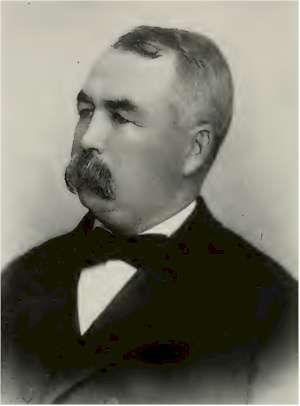
Hogle, James
The late James Hogle was one of Utah's most prominent citizens
and was honored and respected by all who had the good fortune to
have his friendship and acquaintance. Mr. Hogle was widely known
in the inter-mountain States and counted as his friends the best
element of citizenship in that section of the country. He was
born at Armaugh, Ireland, October 15th, 1838.
When but six years of age his parents moved to Quebec, Canada,
where the boy was sent to a French school until he was 15 years
of age. Then the family removed to Illinois where they resided
until 1859, when the Colorado gold excitement broke out and
young Hogle, then about 20 years old, was stricken with the gold
fever and joined the rush to Pike's Peak. He was a member of a
party that started from Illinois. Most of them grew tired of the
hardships of travel before the ox teams reached St. Joseph, but
young Hogle resolutely kept on, driving a yoke of oxen and a
mule on the wagon in which he had his earthly possessions. Only
two others of the original party stuck, and they were all that
remained when they reached Denver which at that time was merely
a cluster of roughly built houses and no one had any idea that
it was the beginning of a great city. Mr. Hogle remained in
Denver four years and acted as bookkeeper for a mercantile house
and resided with a French family there.
In 1863 the gold craze again seized him and he pushed on to
Virginia City, Montana, where he did mining in Alder Gulch. He
first came to Salt Lake in 1864 and in the spring of 1865 went
to Helena, Mont., and then to the gold placer grounds of Loon
Creek, Idaho; he returned to Salt Lake in 1871, determined to
make it his permanent home, and the following year entered
business in partnership with James T. Clasby, which continued
successfully for several years. Upon the dissolution of the firm
he entered into partnership with his brother Owen, and built up
a profitable business. Mr. Hogle was an intimate personal friend
of the late Marcus Daly, who repeatedly tried to induce him to
go to Butte to enter business, but Mr. Hogle had formed a deep
attachment for his adopted city and refused to leave it. Marcus
Daly and James Hogle were friends when neither had much, and the
friendship ripened as they both amassed wealth. Mr. Hogle
through his mining interests and fortunate investments was able
to amass a substantial fortune which enabled him to retire from
active business, which he entrusted to younger hands, and during
the four years preceding his death spent his time in travel and
recreation.
At the time of his demise Mr. Hogle was sixty-nine years old. He
was sincerely mourned by all who knew him for his lovable
disposition, charitable nature and extreme generosity. Mr. Hogle
was married to Miss Ida Elizabeth King in 1873, who survives
him. One son, James A. Hogle, was born to them. He is now a
mining engineer of Salt Lake City.
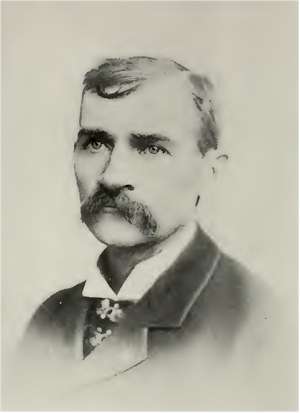
Judge, John D.
The late John Judge was one of the most
remarkably successful mining men that ever came to Utah. He was
also one of the best liked and most popular men to be found
anywhere in the inter-mountain country. His demise was much
lamented by all who were fortunate enough to know him. He was a
kind-hearted, generous, upright, honest man, whom everybody
loved and respected. He led an active life and was one of Utah's
foremost and useful citizens. He died September 14, 1892, at the
height of his success, and but forty-seven years of age.
John Judge was a native of Ireland, a son of John and Annie
Judge, and was born in County Sligo, in 1845. He came to America
when an infant, and his early years were spent in Essex County,
New York State, being educated in the common schools there. His
parents were successful farmers, and farming and mining were the
vocations he was naturally inclined to follow. Therefore, at
fourteen years of age he began work in the mines, and lived at
Black Brook until he was eighteen. He then enlisted in the Union
army, as a private in Co. K., Second Regiment, New York
Volunteer Cavalry, otherwise known as "The Empire Light
Cavalry." He served a little over two years, being wounded and a
prisoner for eight months in Shreveport, Louisiana, and in
Taylor, Texas.
Just after the war Mr. Judge was married at Port Henry, on
November 25, 1867, to Miss Mary Harney, and to them were born
five children; namely, Mrs. W. M. O'Brien, Mrs. T. A. Baldwin,
Jr., Mrs. J. E. Woodward, Miss Katherine Judge, and J. Frank
Judge.
In April, 1876, Mr. Judge arrived in Utah, and for a time was a
guard at the penitentiary, which position in those days required
a man of nerve and daring. Later he became a miner at Wood
River, Idaho. Returning to Utah, he went to Park City, where he
prospected and worked upon some of the most valuable properties
there, including the Daly mine. Mr. Judge was one of the
original lessees of the Mayflower, from which the profit was
placed to purchase the Silver King claims. When the Silver King
Mining Company was organized, Mr. Judge was left off the board
of directors at his own request, he being in poor health at that
time. The Judge estate became rich through the Silver King mine.
His widow and family reside in a handsome residence on East
South Temple Street, Salt Lake City.
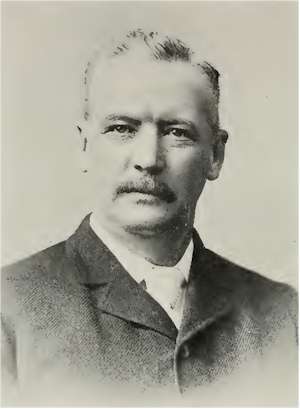
Mackintosh, Richard
Among the pioneers of mining, both in
Utah and Nevada, there is no name better known than that of
Richard Mackintosh. He was the son of Captain William
Mackintosh, of the 93rd Royal Highlanders, and was born in
Dublin Barracks, Ireland, while his father's regiment was
quartered there. Richard Mackintosh left Europe when a mere boy
of nineteen, and made the long trip around the Horn from New
York to California, arriving there in the later days of the
great gold excitement. After cleaning up enough gold dust to
continue his mining operations, he journeyed to Virginia City,
Nevada, and took active part in the early development of the
famous Comstock. From Nevada he came to Salt Lake in 1871, and
continued his activities in mining in Utah, a field at that time
comparatively new, and was the first man in this State to engage
in the public commercial sampling of ores. The Pioneer Sampler
at Sandy, Salt Lake County, was his first undertaking in that
line, and later as the mines near Park City proved of great
value he built the Mackintosh Sampler at that camp. The sampler
in Park City still belongs to the Mackintosh Estate, and is at
present being operated. The Pioneer Sampler, which he had
operated at Sandy for many years, was sold to Mr. A. J. Gushing,
who later disposed of it to the present Pioneer Ore Sampling
Company.
Mr. Mackintosh, associated with Mr. R. C. Chambers and others,
in the year 1889 acquired by purchase the Diamond and Excelsior
mines at Eureka, Nevada, from which a large tonnage of
high-grade ores has been profitably mined continuously to the
present time, and this output has always been and is yet shipped
to the Salt Lake Valley Smelters through the Pioneer Sampler at
Sandy.
In the year 1880 Mr. Mackintosh was married to Miss Emma Goss,
only daughter of Mr. George Goss, who was associated with the
construction of the Denver and Rio Grande Railroad, the building
of the first railroad lines into Bingham and Little Cottonwood
Canyons and the gravity tramways to the mines. Mrs. Mackintosh
was a popular and well-loved woman, widely known for her
generous giving to the cause of charity. Both Mr. and Mrs.
Mackintosh devoted much time to philanthropy, and Mr.
Mackintosh's genial soul delighted in this use of his wealth.
The couple had no children. The estate was inherited by a niece
of Mr. Mackintosh, Miss Blanche L. Mackintosh, who, since her
marriage to Dr. A. E. Rykert, has resided in Paris, France.
Richard Mackintosh was one of the Utah Commissioners to the
World's Columbian Exposition in Chicago in 1893, and filled the
position with great credit to himself and the State. He was a
charter member of the Alta Club, and its president for four
successive years. Although a public-spirited man, he was never
induced to accept political office until the election for the
Constitutional Convention in 1895, to which he was elected and
served through the session with marked ability and intelligence.
He thus took an active part in the framing of the fundamental
laws of the proposed new State in the Territory of which he had
been an active factor for many years.
Mr. Mackintosh began to fail in health soon after his wife's
death, in 1895. A cancer, long unsuspected, at last compelled
his retirement from active business life, and the end came in
February, 1900, five years and two months after the death of
Mrs. Mackintosh.
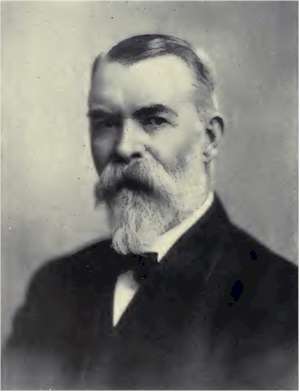
Sharp, Bishop John
One of the sturdiest characters
Mormonism ever brought to Utah as a convert, was the late Bishop
John Sharp, of the former twentieth ecclesiastical ward in Salt
Lake, he being elevated to that position in 1854. Born at the
Devon Iron Works in Clachmannanshire, Scotland, in 1820, and
going to work in the coal pit when he was but eight years old,
he became an expert coal miner, and a singular coincidence was
that with the promiscuous child labor that prevailed in that
land in those days, Jane Patterson, whom he later made his wife,
went to work in the same pit at practically the same time. In
1847 he became a convert to the Mormon faith, and the same year
came to America, reaching Utah, via New Orleans, in 1850,
accompanied by his two brothers, Adam and Joseph Sharp, and by
his wife and their two sons, John and James Sharp, then nine and
seven years old respectively.
His first activities in Salt Lake were quarrying stone for the
building of the Tabernacle and the Tithing House, and he was
shortly made superintendent of the quarries, and later
superintendent of public construction for Salt Lake. He was a
man of great intelligence and constructive capacity, and was the
largest sub-contractor under the Brigham Young contract with the
Union Pacific Railroad, building all the grade with the Utah men
and teams from Echo Can-yon to Promontory. John Sharp had
dictated the terms of the contract. They were that eighty per
cent, of the engineers' estimates of completed work should be
paid, for the men's wages, each month, and the final settlement
made when the work was finished. He was making money on his
contracts on the Union Pacific, and when the Utah Central
Railway Company was organized he became a large subscriber for
the stock and one of its directors, and he built and equipped
the road and followed it up with the building of the Utah
Southern Railway, reaching to Milford. In 1871 he was
superintendent of the Utah Central; in 1873 he became its
president, and vice-president of the Utah Southern Railway,
later becoming a director of the entire Union Pacific system,
with a seat on the Executive Committee, and always with a potent
voice.
Bishop Sharp was physically of herculean proportions, and his
activities had made him a very wealthy man, and a power in the
financial circles of the Pacific railways. He had made money
ever since his arrival in Utah, Brigham Young, early recognizing
his exceptional abilities, placing all kinds of activities and
opportunities before him. A pet cognomen was "The Railroad
Bishop," and in everything he turned his attention to he made
work for men and paid good wages always. He early acquired heavy
interests in the coal lands in southeastern Utah, and supplied
the. Territory with its fuel.
He died in the seventy-second year of his life at his home on
East Brigham Street, Salt Lake City, December 23, 1891, from an
aggravated attack of la grippe, after a brief illness. He left a
large family, five sons and nine daughters, all the sons and
eight of the daughters being married at the time of his death.
His funeral was held at his late residence on East Brigham
Street, on Sunday, December 27, 1891, and among those who
attended were George Q. Cannon, Angus M. Cannon, William B.
Preston, John R. Winder, Bishop William Thorn, Bishop E. F.
Sheets, John E. Dooley, W. S. McCornick, S. W. Eccles, George Y.
Wallace, and Judge Charles S. Zane. The directors of the Deseret
National Bank and of the Z. C. M. I. were all present. The
funeral address was delivered by Elder John Henry Smith, and was
eloquently eulogistic of the life of deceased. The Cambrian Glee
Club rendered some of tha favorite hymns of Bishop Sharp; the
bier was buried in flowers, and during the two hours the body
lay in state in the main hall of the residence hundreds of his
friends and admirers passed in line to take a last view of the
dead. The pall-bearers were James C. Livingston, C. H.
Livingston, George Swan, Samuel H. Mill, George G. Bywater, John
Acomb, Zebulon Jacobs and J. H. Rumel, Jr. The interment was in
the city cemetery, and the procession that followed the remains
to their last resting place was never greater at any funeral in
Salt Lake.
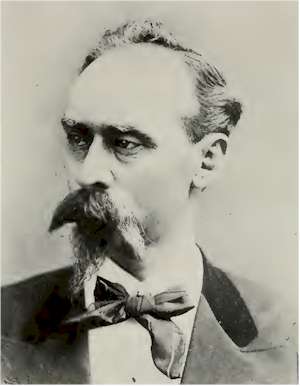
Walker, Samuel Sharp
The late Samuel Sharp Walker was the
eldest of the four well-known Walker brothers, whose names are
known, and honored and respected and who have accomplished so
much towards the development and up-building of Utah and its
resources.
Samuel Sharp Walker was a son of Matthew and Mercy Long Walker,
and was born at Yeadon, Yorkshire, England, September 22, 1835.
The elder Walker was a prominent wool merchant of Yorkshire,
England, and immigrated to this country in 1850, and while on
his way to Utah he died at St. Louis, Missouri. His wife
survived him, and passed away in Salt Lake City in December,
1863. Samuel Sharp Walker, together with his brothers, J. R., D.
F., and M. H., arrived in Salt Lake City in September, 1852.
After a couple of years working in St. Louis as clerks and
peddling notions they finally saved enough money to move on to
Utah. The brothers were natural born merchants, and came to the
notice of William Nixon, the father of general merchandising in
Utah, who gave them employment. The family settled first in the
Third ward, where they afterwards purchased property, gradually
acquiring possession of the greater part of a city block in the
Seventh ward, where they afterwards lived, and there they built
the handsome homes of the Walker brothers at the present day.
Sharp Walker turned his attention to farming and engaged in
agricultural pursuits until 1859, when the famous house of
Walker Brothers was organized at Camp Floyd. Here he joined his
brothers in conducting the business and supplying the United
States troops with merchandise. They soon built up a large
business and became wealthy. After the departure of the troops,
the brothers moved their store to Salt Lake City, and the famous
store of Walker Brothers has been a landmark there ever since,
and has grown to be one of the largest and most complete dry
goods establishments in the entire Western country. The firm
started in a small way, but soon acquired the location in which
they are at the present day. This was in 1866.
The firm afterwards engaged in finance, and the present banking
house of Walker Brothers was the outcome. Mining and other
investments were also made, including the famous Emma mine,
which was afterwards sold to English capitalists. The firm met
with much success and only a few reverses, notable among which
was the burning of the Walker opera house July 3, 1889. After
the fire the building-was remodeled and made into an office
building known as the Atlas block. This was burned in 1903 and
later rebuilt, and is now one of the largest office buildings in
the city.
The Walker brothers were substantial citizens, public spirited
and benevolent in the use of their wealth, and up to the time of
the death of S. S. Walker, which occurred in 1887, he was
actively engaged in business in Salt Lake City.
Samuel S. Walker was married January 5, 1857, and was the father
of ten children, Samuel, Frederick, Elizabeth, Emma, Mercy,
Nellie, Matthew Sharp, Fannie, Doris, and John Walker.
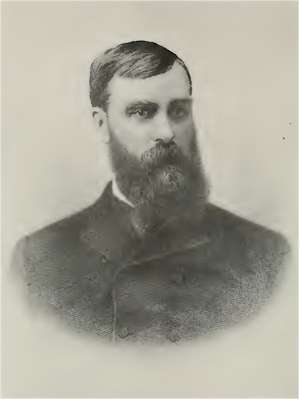
Walker, Joseph Robinson
Joseph Robinson Walker, deceased,
merchant and banker, Salt Lake City, Utah, one of the most
prominent business men of the State, was a native of Yeadon, a
small place near Leeds, Yorkshire, England, being born there
August 29, 1836. The family line is traced back as far as 1700.
Matthew Walker, his father, married Mercy Long, and followed the
vocation of a merchant in England, until the spring of 1850,
when he brought his whole family, four sons and two daughters,
to America.
Landing at New Orleans, the party ascended the Mississippi River
to St. Louis, and settled there, the head of the family going at
once into business. In 1851, during the scourge of cholera, the
father and two daughters were carried off by the disease. Joseph
R. had received a good practical education for a boy before
leaving his native land, and gave promise of being of great
assistance to his father at the store in St. Louis, when the
death of the father proved a terrible blow to the family and
interrupted their plans. All four of the boys, however, secured
positions in fancy goods and notion stores, Joseph R. going into
one on Broadway, where he held a place as a bright, active and
efficient young clerk for two years.
At that time the fertile regions beyond the plains were
attracting much attention, and during that period the mother and
her boys discussed repeatedly the advisability of moving out to
the then new Western country. In April, 1852, the decision was
made. All their household effects were disposed of, a strong and
specially made wagon was bought, and the family took the long
and fatiguing journey over the plains and mountains to Salt Lake
City, Utah, where they arrived without serious accident, in
September, 1852. Upon their arrival the entire worldly
possessions of the family amounted to a small sum of money, four
oxen, an Indian pony, which had been bought from the Indians en
route, in exchange for a rifle and some powder, and a steer
obtained the same way from a trader for a keg of powder. The
oxen were soon traded for an adobe house and lot, where the
family lived for several months, and then leased a log house on
the spot where they subsequently built their magnificent
residences. Provisions were dear in Salt Lake in 1853, flour
rising to $20 per hundred pounds, and the Indian pony was traded
for 800 pounds of that commodity, but only half the bargain
price was paid, 400 pounds.
Until 1856, Joseph R. and his brothers worked during the winter
in hauling wood from the mountains. Meanwhile, however, the
Indians had begun to attack the settlements and were killing a
great many people, and among the volunteers who enlisted to help
protect the inhabitants of the farming regions near Salt Lake,
was Joseph R. Walker. When the excitement had apparently
subsided, thirteen men Mr. Walker among the number were detailed
to drive a herd of cattle into Salt Lake City, a distance of
eighty miles. The first night out they took proper precautions
against surprise at night by Indians, and the result proved
their wisdom. The stockade was attacked during the night by the
Indians, who made several furious assaults in an effort to
stampede the cattle and horses. The foe was beaten off, however,
with a loss of five or six of their number, and without having
damaged the stockade, but two horses and twenty cattle were shot
and one of the men in the detail was wounded.
The trading instincts of Mr. Walker prompted him early in his
career in Utah, to obtain a mule team, a wagon, and a stock of
dry goods and notions, all on credit, and to begin business on
his own account. His early training then proved of value to him,
and this, combined, with unusual talent and address, made him
successful from the start. The entire outfit was paid for in the
first few months, and from that time forward his progress was
rapid. In 1856 Mr. Walker started for California, and in 1857
settled in Carson Valley as clerk for a trader, and later built
a store at Gold Canon, in a placer-mining camp named Johns-town,
near the afterwards famous Comstock Lode. Here he found
occupation and profit in a large trade and the exchange of goods
to miners for gold dust.
In August, 1858, Mr. Walker returned to Utah. General Albert
Sidney Johnston had established a camp of United States troops
at Camp Floyd, about fifty miles from Salt Lake, and Mr. Walker,
repairing to that point, served as a clerk with the army long
enough to find out what the situation was, and then with his
three brothers, opened a store at Camp Floyd with a general
supply of dry goods, groceries, cigars and tobacco, and such
other articles as could be sold to the soldiers, all bought in
Salt Lake on credit, at sixty per cent, advance on first cost
and thirty cents more per pound added for freight. The first
year the brothers made a profit of $20,000. Meanwhile, in Salt
Lake, in 1859, the Walker brothers had opened a large general
store and bank, and this business has been carried on
successfully to the present day, although the four Walker
brothers dissolved partnership in 1884. As at Camp Floyd,
banking has always been carried on in connection with the
general merchandising business.
Illustrative of the difficulties Utah merchants labored under in
the early times, it is stated that, when in 1864 Mr. Walker went
to New York City and bought a stock of goods worth $250,000, he
had to pay fifteen to twenty cents a pound for freight and found
that it was impossible to get insurance on the stock while it
was in transit, and when ' the goods were unloaded in Utah, they
had cost him $350,000. Mr. Walker was always a merchant and
banker, but was later largely interested in real estate in Utah
and California, and in mining enterprises in both States. The
first stamp mill in Utah was built by the Walker brothers in the
Ophir District.
In addition to being a member of the immense Walker Bros. Dry
Goods Company, Joseph R. Walker was a member of Walker Bros.,
Bankers, and president of the Alice Gold & Silver Mining
Company, at Walkerville, Mont., and extensively interested in
mines and other enterprises. While he derived great pleasure
from the management of large interests, he was a lover of home
and family. He contributed liberally to worthy objects, and
promoted all measures calculated to advance the welfare of the
community in which he lived. He was a strong, genial, capable
man, untiring in labor, alert to opportunity, a man of ideas and
always sound in counsel. He was not a politician, but a business
man, but took the lively interest in public affairs which every
American citizen must feel. He died in the early evening of
January 6th, 1901. Two years after the death of Mr. Walker, the
heirs sold their interest in Walker Bros. Bank, and acquired
control of Walker Bros. Dry Goods Company.

Index

Source: Sketches of the Inter-Mountain
States, Utah, Idaho and Nevada, Published by The Salt Lake
Tribune, Salt Lake City, Utah, 1909
|


